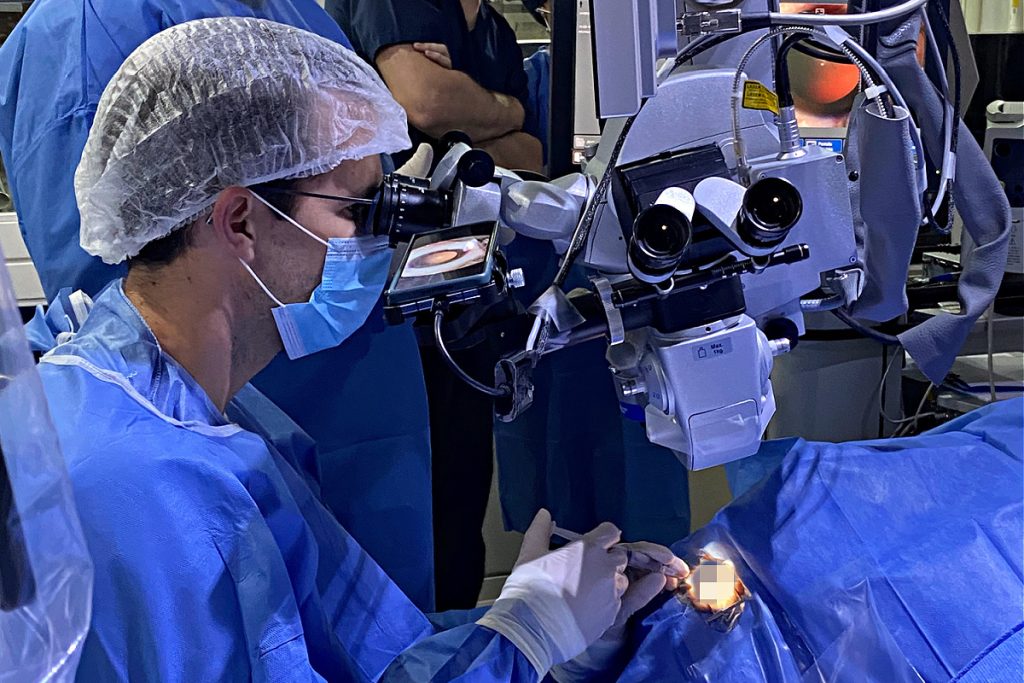Why Implantable Collamer Lens (ICL) is the Best LASIK Alternative for Dry Eyes

When people think of vision correction, LASIK is often the first procedure that comes to mind, but it is not the ideal solution for everyone—especially those with dry eye syndrome. Dry eye is the most common side effect of LASIK, so if you already have dry eye syndrome, you may be advised not to undergo LASIK or you may understandably have concerns about the procedure.
Fortunately, an advanced alternative called Implantable Collamer Lens (ICL) surgery offers exceptional vision correction without exacerbating dry eyes. Here, Dr. Jordan Stanley, a Marietta ophthalmologist and board-certified refractive surgery specialist, explains how ICL works and why it is an excellent choice for patients with dry eyes.
Why is LASIK not ideal for dry eye sufferers?
LASIK reshapes the cornea using a laser, which permanently alters the cornea and can disrupt corneal nerves and reduce tear production. Many patients experience temporary or even long-term dry eye symptoms after LASIK. Those who already struggle with dry eyes may find that LASIK worsens their symptoms and makes daily activities like reading or computer work more uncomfortable, requiring frequent eye drops throughout the day.
By contrast, ICL corrects vision without removing or reshaping corneal tissue. By placing a corrective lens inside the eye, ICL preserves the eye’s natural structure and tear production for a safer and more comfortable option for dry eye sufferers.
“Dr. Stanley was extremely thorough and really took time to explain everything to me- much more so than other eye doctors have in my past. His staff is friendly and welcoming, and his clinic is bright and inviting. Highly recommend this practice.”
What is ICL, and how does it work?
An Implantable Collamer Lens (ICL) is a permanent, flexible, and biocompatible lens that is implanted into the eye to correct refractive errors—nearsightedness (myopia) and astigmatism.
Dr. Stanley places the thin collamer lens inside the eye, between the iris and the natural lens, to restore clearer vision. ICL surgery is a quick procedure—typically lasting just 20 to 30 minutes—and provides long-term vision correction without increasing the risk of dry eye symptoms.
- Related: Dr. Stanley Receives World-Class Training in ICL Refractive Surgery, a Lens-Based LASIK Alternative
Unlike LASIK, which permanently alters the cornea by removing and reshaping corneal tissue, ICL provides high-definition vision correction while preserving the natural structure of the cornea.

What are the benefits of ICL over LASIK?
ICL is one of the best LASIK alternatives for dry eyes and also offers several other advantages:
- Preserves corneal health: ICL does not alter corneal shape or thickness, so you’re less likely to experience dry eye complications.
- Reduces risk of night vision changes: ICL patients report fewer issues with halos and glare compared to those who have had LASIK.
- UV protection: The Collamer material naturally filters UV rays to protect the eyes from sun damage.
- Treats higher prescriptions: ICL corrects severe nearsightedness beyond the limits of LASIK.
- Reversible and adaptable: ICL can be safely removed or upgraded in the future if your vision needs change—unlike LASIK, which permanently alters the cornea.
Who is a candidate for ICL surgery?
You may be a good candidate for ICL if you:
- Have moderate to severe nearsightedness (-3.00 to -20.00 diopters) with or without astigmatism
- Are between 21 and 45 years old with stable vision
- Have dry eyes, thin corneas, or high prescriptions
- Want a long-term vision correction solution without the risks of LASIK
- Even if you’ve been told you are not a candidate for LASIK, you may still qualify for ICL surgery.
Dr. Stanley assesses your eye health and prescription to determine if ICL is the best option for your vision needs at our Marietta ophthalmology office.
What to expect from the ICL procedure and recovery
Dr. Stanley performs ICL surgery as an outpatient procedure using numbing eye drops and an optional mild sedative to help you relax. You will likely see an improvement in your vision immediately and continued improvement over the next several days. You will not have any stitches and can return to work and resume most normal activities within 24 hours. However, heavy lifting and strenuous exercise should be avoided for the first week to ensure proper healing. Dr. Stanley will provide personalized aftercare instructions to support your recovery and ensure the best possible results.
Looking for a LASIK alternative in Marietta?Board-certified ophthalmologist Dr. Jordan Stanley and his expert team at PureSight Surgical offer advanced vision correction options tailored to your unique eye health needs. To explore your vision correction options, schedule a consultation with Dr. Stanley today by calling (770) 230-2020.
References »
Shtein RM. Post-LASIK dry eye. Expert Review of Ophthalmology. 2011 Oct;6(5):575-582. doi: 10.1586/eop.11.56.
Toda I. Dry Eye After LASIK. Investigative Ophthalmology & Visual Science. 2018;59(14):DES109-DES115. https://doi.org/10.1167/iovs.17-23538.
Tamimi A, Sheikhzadeh F, Ezabadi SG, Islampanah M, Parhiz P, Fathabadi A, Poudineh M, Khanjani Z, Pourmontaseri H, Orandi S, Mehrabani R, Rahmanian M, Deravi N. Post-LASIK dry eye disease: A comprehensive review of management and current treatment options. Frontiers in Medicine (Lausanne). 2023 Apr 11;10:1057685. doi: 10.3389/fmed.2023.1057685.